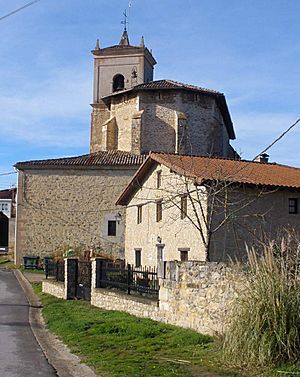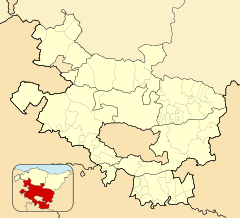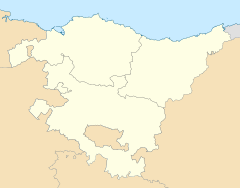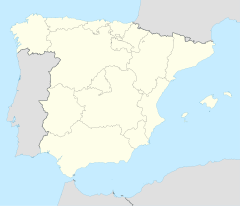Aberásturi facts for kids
Quick facts for kids
Aberásturi
|
|
|---|---|

Church of San Esteban
|
|
| Country | Spain |
| Autonomous community | Basque Country |
| Province | Álava |
| Comarca | Vitoria-Gasteiz |
| Municipality | Vitoria-Gasteiz |
| Area | |
| • Total | 10.03 km2 (3.87 sq mi) |
| Elevation | 560 m (1,840 ft) |
| Population
(2021)
|
|
| • Total | 131 |
| • Density | 13.06/km2 (33.83/sq mi) |
| Postal code |
01193
|
Aberásturi is a small village, also known as a concejo. It is located in the Vitoria-Gasteiz area of Álava province. This province is part of the Basque Country in Spain.
Aberásturi is about 8 kilometers (5 miles) east of the main city center of Vitoria-Gasteiz. It sits by the Ertekaberri river, at the bottom of a mountain and on a hillside.
Contents
History of Aberásturi
For a long time, Aberásturi was part of the Cuadrilla de Vitoria. A cuadrilla is like a historical region or district. In 1840, a nearby area called Cuadrilla de Añana separated from Vitoria. But Aberásturi stayed with Vitoria.
Later, around 1870, Aberásturi became part of the larger Vitoria-Gasteiz municipality. Before that, it was part of a smaller municipality called Elorriaga, which no longer exists.
People Living in Aberásturi
The number of people living in Aberásturi has changed over time. In 1960, there were 242 residents. By the year 2000, this number had dropped to 121 people. Since then, the population has stayed around the same. In 2021, there were 131 people living in Aberásturi.
| Historical populations of Aberásturi | ||
|---|---|---|
| Year | Pop. | ±% p.a. |
| 1960 | 242 | — |
| 2000 | 121 | −1.72% |
| 2005 | 121 | +0.00% |
| 2010 | 139 | +2.81% |
| 2015 | 124 | −2.26% |
| 2020 | 130 | +0.95% |
| 2021 | 131 | +0.77% |
Important Buildings in Aberásturi
The main church in Aberásturi is a Catholic parish church dedicated to Saint Stephen. The front part of the church, called a portico, was designed by Justo Antonio de Olaguibel. This part was built in the early 1800s and has a neoclassical style. Neoclassical means it uses ideas from ancient Greek and Roman architecture. The rest of the church building is much older, dating back to the late 1400s or early 1500s.
See also
 In Spanish: Aberásturi para niños
In Spanish: Aberásturi para niños




